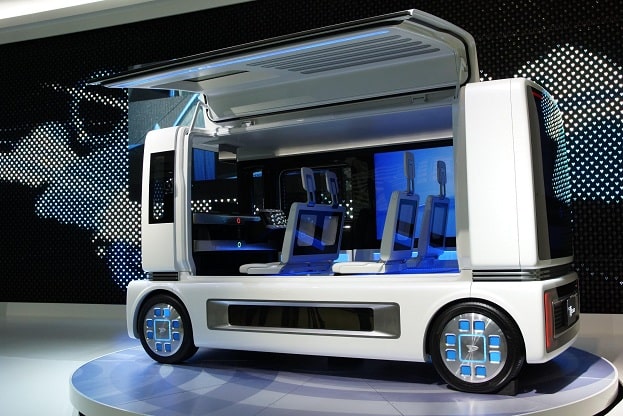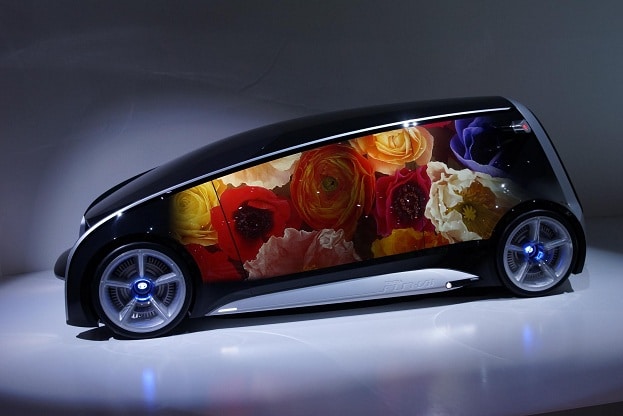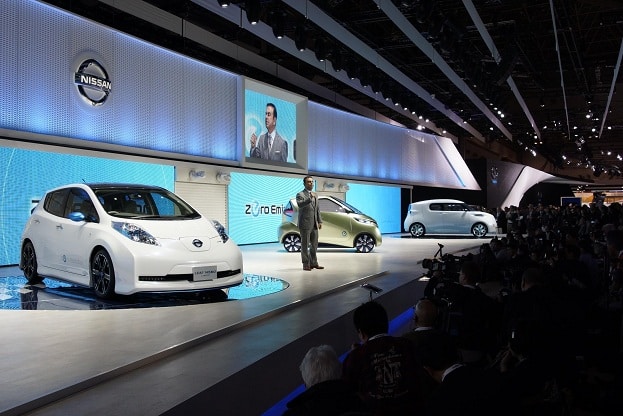An Observation for Japanese abundant drive in design and innovation creativity, the Tokyo Motor Show has been a location symbolizing forward thinking. The Tokyo Motor Show has served as a unique showcase of cars, trucks and motorcycles depicting bold ideas along with the occasional bizarre attraction. Giving consumers a peek at new arrivals for dealerships, the 2011 show is presenting the world a look at new production vehicles such as Toyota GT-86, Subaru BRZ and Mazda’s car displaying I-ELOOP hybrid technology. Cars like Volkswagen’s Cross Coupe Concept and the most extreme design study of the year, the Toyota Fun-Vii provides a strong statement to a wide-open vision for global motoring. Presenting the future of motoring, the 2011 edition auto exhibition at Tokyo’s Big Sight venue serves importantly in the recuperation during a difficult present.
Held first in 1954, the Tokyo Motor Show was held to highlight the products created by a people recovering from their imperialistic errors of the 1930s that ultimately led to direct combat with the United States during World War Two. Demonstrating modest and utilitarian vehicles for an new, evolving culture, the Tokyo Motor Show beginnings would see Toyota, Honda, Nissan and Mitsubishi (a diverse corporation that debuted their very first vehicle at the 1959 event) gain steps into the Japanese marketplace. As Japanese auto brands became increasingly more global, the Tokyo Motor Show grew into a spotlight event for the car business when European and even American manufacturers fought for exhibition space. The precursor vehicle to the Audi R8 (the Avus concept sports car) was a significant world premiere at the Tokyo Motor Show in 1991. In recent years, the Honda FCX and the Nissan GT-R were some of the high-profile production cars the Japanese exhibition brought to light.
As automotive entities arrived at the Tokyo Big Sight venue for the 2011 exhibit, this show staging came just short of nine months after Japan’s worst environmental disaster. On March 11, a 9.0 magnitude underwater earthquake shook the Asian country violently. The Earthquake spawned an equally as destructive tsunami that ultimately led to the lives of almost 16,000 people being lost (including an employee at the Honda R&D Center in Tochigi). Placing second below the human loss of Japan’s worst natural event, a country’s massive industrial complex was brought to a halt due to damage and power interruptions.
The Japanese auto industry shutdown not only slowed productivity on the Asian island but surged worldwide as vital vehicles and parts were unable to flow out of the country for almost a month. Possessing large North American assembly capacity, American and Canadian workers at Honda as well as Nissan plants operated under reduced capacity for months following the disaster. For Honda, it wasn’t until August when Honda’s supply to North American plants for the Civic and Accord returned to full capacity. Toyota, Subaru, Suzuki, Mazda and Mitsubishi also suffered global productivity setbacks throughout 2011 year.
Nearly nine months since the disaster, Japanese auto companies have returned to full operations for the most part but continued to haunted by sales sheet declines through 2011. With production hindrances more than likely playing a role, many of the leading Japanese automakers are heading into the end of the year posting regional and even global losses. Toyota has recorded a 7.5 percent decline in United States vehicle sales in 2011 compared to previous year. In the 11 months of this year, the top Japanese automaker’s Lexus division (consisting largely of cars built in Japan) holds a 14.2 percent drop over 2010. Honda’s tightened supply through much of this year has also been a contributing factor to a 5.5 percent drop in American sales for the 11 months of 2011. Mitsubishi Motors production for the first six months within the country of Japan fell by 12.6 percent. One of the few bright notes was Nissan that actually bettered Japan corporate rivals by increasing global sales by 18.8 percent for 2011. Nissan’s success could be owed to sizeable amounts of part and vehicle sources outside of Japan. However, the electric Nissan Leaf’s production in Japan slowed the distribution of the very hot new vehicle.
While Japanese auto companies returned to normality over the summer of 2011 in the production of vehicles, the effects of the earthquake and tsunami left these companies in-line with their national community. Five of the major Japanese auto manufacturers immediately donated the equivalent of over 13 million dollars US of aid on top of other provisions including blankets, generators and forklifts. Showing unity, autoworkers and other individuals of regions outside of Japan were also generous to their colleagues. American Honda Motor Company and the Red Cross teamed up to raise money to help aid the Japanese people. For days following the earthquake, Nissan provided their headquarters in Yokohama City as a temporary shelter. A wonderful scene of humanity overcoming the typical coldness of corporation allowed the first steps following this natural disaster aftermath to be made for all Japanese citizens still dealing with hurt.
A much-needed public celebration of engineering marvels, Japanese auto companies are seeking a lot of support from the biennially scheduled world-class event. Similar to the auto shows proceeding after the government-assisted bailouts of General Motors and Chrysler little more than a year ago, the Tokyo Motor Show for 2011 is something more than a display of cars, trucks or motorcycles. The auto companies of Japan are the compilation of people who have committed themselves to move forward. Without forgetting the past, the present and future seeks to carry on an overall spirit of progressive innovation. The attending crowd for the 2011 Tokyo Motor Show have witnessed first-hand the resilience of an auto market seeing the optimism with every vehicle presentation. Unlike several North American auto shows in Chicago and Los Angeles that remain secretive on actual event attendance, the 2011 Tokyo grandly announces the daily count at the turnstiles. After 8 days of public exhibition, the 2011 Tokyo Motor Show has entertained 513,200 admirers of the transportation culture.
Enduring from what has been a year of struggles, the auto manufacturers of Japan are positioning themselves to overcome hard times with a driven intention.
Information source: American Honda Motor Company, Nissan Americas, Tokyo Motor Show
Photo source: Unnamed photographers via Newspress UK




